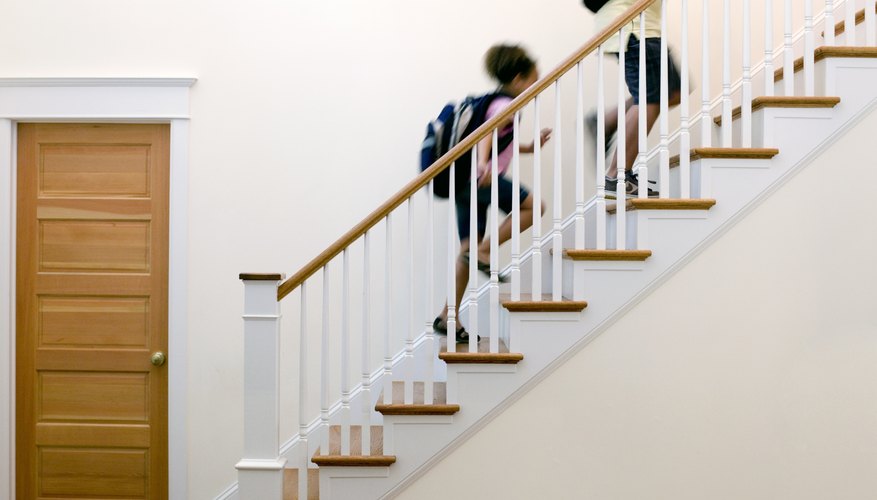You can install stair runners the same way you would install regular carpeting, which involves using tack (or newer tackless) strips and a carpet stretcher to keep the runner in place. This is the best method for a permanent runner on any style of staircase because it is the most secure. As long as your staircase does not curve, you can choose faster, easier methods to install your runner, but they may not be as secure, so use caution when employing alternate methods, especially on heavily trafficked stairs.
Staples
Choose a powered staple gun and staples long enough to pierce through the carpet and well into the wood if you are stapling your carpet runner. You can hide the staples at least somewhat by spreading the carpet nap with your fingers and pressing the staple gun down to the base before you send each staple into the carpet. Staples that reach at least 1.5 cm (1/2 inch) into the wood are best. As with tack strips, staple the runner along the back edge of each stair and the bottom of each stair riser (the vertical face). If your stairs have "noses" that stick out over each step, you can staple the runner to the underside of the nose as well. Start at the top and stretch the runner before applying each line of staples.
- Choose a powered staple gun and staples long enough to pierce through the carpet and well into the wood if you are stapling your carpet runner.
- As with tack strips, staple the runner along the back edge of each stair and the bottom of each stair riser (the vertical face).
Tape
Secure lightweight stair runners with double-sided tape. This will allow you to remove the stair runner every once in a while for washing, but removing it too often will decrease the effectiveness of the tape. Place a strip of tape the full width of the runner at the back and front of each step and the base of each riser. Press the runner firmly in place on each step and test it to make sure the carpet is secure and free of wrinkles and lumps that can cause trip hazards. Tape is a great method for concrete stairs, such as those leading to basements, and you can use it with indoor/outdoor carpet on exterior stairs. Tape also allows you to change the decor easily by switching to a new runner without having to use any tools, but you may need to set out a new layer of tape if the old layer is not sticky enough after the original runner is removed.
- Secure lightweight stair runners with double-sided tape.
- This will allow you to remove the stair runner every once in a while for washing, but removing it too often will decrease the effectiveness of the tape.
Rods and holds
Stair rods and holds are an excellent method of installing stair runners if you anticipate needing to remove the runner for any reason, including washing or changing the look of your stairs. Stair rods install on each step's riser. They generally consist of a bracket on each end that holds a rod in place. The rod attaches over the carpet runner, squeezing it into place when the brackets are closed. Stair holds are similar to rods, but will hold the runner only from each side, not all the way across like rods. Both methods should only be used according to the manufacturer's instructions. They generally require a nonslip pad placed under the runner, and some types may require additional attachment methods for the carpet edge at the top of the stairs.
- Stair rods and holds are an excellent method of installing stair runners if you anticipate needing to remove the runner for any reason, including washing or changing the look of your stairs.
